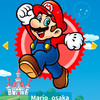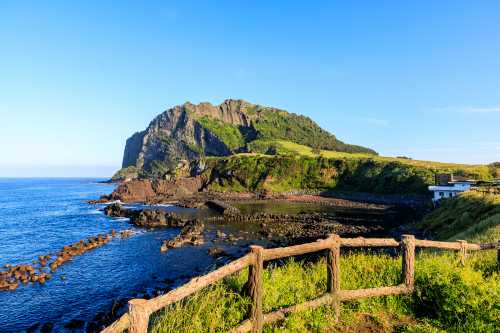#cruiseholiday Adora Magic City Cruise Trip – Sail into China’s Floating Paradise 🇨🇳🛳️ Step aboard the magnificent Adora Magic City, China’s first luxury home-grown cruise ship, and experience a journey where modern elegance meets ocean adventure! 🌊✨ Departing from Shanghai, this stunning vessel offers a world of comfort — from spacious suites and international dining to dazzling entertainment and sea-view pools. 🍣🎭🌅 Sail through breathtaking coastal routes, explore destinations like Jeju Island and Nagasaki, and enjoy themed nights, live performances, and family-friendly fun on board. 🎶👨👩👧👦 Whether you’re relaxing under the stars, enjoying fine cuisine, or soaking in the panoramic sea views, every moment on the Adora Magic City feels magical. It’s not just a cruise — it’s an unforgettable voyage across Asia’s blue horizons! 💙⚓ #China #AdoraMagicCity #ShanghaiCruise #AsiaCruise #LuxuryTravel #travel #thingstodo #familytravel #couplestrip #staycation
Surmai Duniya
#cruiseholiday 5-Day Itinerary – Shanghai, Jeju, Fukuoka 🇨🇳🇰🇷🇯🇵🛳️ Embark on an incredible 5-day cruise adventure from Shanghai to Jeju Island and Fukuoka, discovering three cultures in one unforgettable journey! 🌏✨ 🌅 Day 1: Departure from Shanghai – Check in, explore the ship, and enjoy the sail-away party. 🌊 Day 2: At Sea – Relax by the pool, indulge in spa sessions, and savor global cuisines. 🏝️ Day 3: Jeju Island, South Korea – Visit Hallasan Mountain, waterfalls, and local markets. 🏯 Day 4: Fukuoka, Japan – Explore temples, try ramen, and shop in Canal City. ⚓ Day 5: Return to Shanghai – Farewell breakfast and memories to last a lifetime. 🧳 Practical Tips: Carry your passport and visas for multi-country entry. Pack light clothes and a formal outfit for gala night. Use onboard Wi-Fi or roaming SIM for connectivity. Book shore excursions early to avoid crowds. A perfect blend of adventure, comfort, and cultural discovery, this cruise offers the best of Asia’s charm — all from the deck of a dream ship! 💫 #AsiaCruise #ShanghaiCruise #JejuIsland #FukuokaJapan #AdanghaiCruise #travel #thingstodo #familytravel #couplestrip #staycation
Surmai Duniya
When you come to Jeju City, in addition to taking pictures while looking at the sea and enjoying the wind, you must try all the authentic food! Jeju Island not only has beautiful scenery, but also a lot of local flavors, whether it’s Korean barbecue pork, stone pot rice or tangerine ice cream, you want to try them all. This trip has compiled a few must-visit restaurants. It's super satisfying to take pictures while eating! Jeju Black Pork Barbecue Restaurant Address: Samdo-dong, Jeju Signature dishes: Jeju black pork pork belly, roast pork neck Environment: Korean style simple decoration, with semi-open grill, fragrant pork fragrance wafting throughout the room Opening hours: 11:00 – 22:00 Price: Around ₩20,000 per person Highlights: Jeju black pork is really juicy, super bouncy skin, no need for too much seasoning is very fragrant! There are also homemade pickled carrots and spicy sauce, which are super layered together. Tip: Don't be in a hurry, slowly burn is the essence, and cold brewed orange water is free to enjoy! Seafood Stone Pot Rice Specialist Address: Coast Road, Jeju City Signature dishes: Bacon stone pot rice, seaweed soup Environment: Typical Korean family-style small shop with sea views outside the window Opening hours: 10:30 – 20:00 Price: Bacon stone pot rice about ₩16,000/serving Highlights: The bacon is smooth and fresh enough, the rice is cooked to the grains and has a seafood flavor. The rice is slightly crispy at the bottom of the pot, and the seaweed soup is perfect for taking pictures and warming up. Tip: You can say that the clerk leaves more pot bar, really crispy! Jeju Orange Ice Cream Shop Address: Near Yuchon Market in Jeju City Signature dishes: orange ice cream, orange cake Environment: Small hipster Cafe decor, orange theme super tropical feel Opening hours: 09:00 – 18:00 Price: Ice cream ₩3,500, cake ₩5,000 Highlights: Tangerine ice cream is sweet and sour and appetizing, with lots of pulp and a fresh and fluffy cake. There are also a variety of tangerine products in the store that you can buy home. Tip: Must eat in hot weather, buy takeaway ice cream to the seaside and eat around! Tips: Most restaurants in Jeju Island accept cash, so you can bring more Korean paper for easy payment; It is recommended that most popular restaurants try to arrive before 11pm/dinner before 6pm to avoid peak queues; Some stores will also give away tangerine drinks or fruit, be sure to ask! #Jeju Island Food #Black Pork Must Try #Stone Pot Rice #Orange Ice Cream #Jeju View Food is Great #Korea Photo Travel
Tatsbb
8 days and 7 nights free travel in Jeju, you can have fun even if you don't drive yourself! This trip swept across four directions of Jeju: East Line, West Line, South Line, and North Line, for eight days and seven nights, covering both natural landscapes and small arts and crafts shops. Jeju is not only big, but also dispersed enough – equivalent to 2.5 Hong Kongs! The distance between each attraction is long, not driving is completely stress-free, bus and Naver map together, do your homework before departure, even if it is sunny and rainy is no difficulty. The most important thing to play in Jeju is - your luggage must be mobile enough, your backpack must be slippers 🚶🏻 and a raincoat 🌧️. Transportation & itinerary tips There is no subway in Jeju, non-self-driving ones mainly rely on buses/call Uber, Naver map search route and real-time shifts are super convenient! Remember to use a T-money transportation card (available at convenience stores), or you can use Alipay. Change the weather immediately when it rains. Slippers and raincoat must be prepared. The weather in Jeju is changing quickly. For the luggage part, it is recommended to use a backpack, carry-on bags are easy to carry. Food recommendations Jeju black pig barbecue, bacon congee, sea girl seafood pot, tangerine dessert are all must-try! There are many seaside cafes, excellent open-air seating, sea view chill. Practical tips for destinations 1. In September, the climate changes big, sometimes sunny and sometimes rainy, going out three essentials (rain umbrella, raincoat, slippers). 2. How to play what line to see the distance to the attraction, bus routes enough but to reserve the journey time. In Jeju, you can still have fun without driving. Remember to prepare your equipment according to the weather and explore! #JejuFreeTravel #JejuBus Guide #JejuFood #JejuPhoto
pigpigkaren
Popular Trip Moments
Sanho Beach Calm🌊 | The Perfect Sunset and Stargazing Spot | High-Quality, Exclusive Dining or Cafe Experience | Perfect Stop on the Udo Coastal Loop | Ideal for Extended, Immersive Udo Exploration | Scenic Treats🌅 | Jeju Island Off-the-Beaten-Path Experiences|Step into a Windows Desktop and the Silent Director’s Film Set | Ideal Base for Mountain and Oreum Exploration | Experience Authentic Udo Island Charm | Modern, Stylish Design and Sensory Comfort | Modern Design that Embraces the Landscape | A Photographer's Paradise of Textures | Infinity Bliss🌊 | Sunset at the Sea🌅 | A Serene, Off-the-Beaten-Path Retreat | Quaint Cafe with a Panoramic View | Unbeatable Proximity to Sanho Beach (Coral Sand) | Unbelievable Water Clarity and Color | Unmatched Panoramic Vistas from High Ground | A Hidden Oasis of Coastal Calm | Udo Island's Premier Poolside Escape | Korea's Rare Gem: The Coral Sand Miracle | Blue Bottle Cafe in Eastern Jeju, Gujwa: A Must-Visit Spot | Spirited Garden | Spirited Garden | Spirited Garden | Spirited Garden | Gentle Kayaking on the Emerald Water | Excellent Self-Catering Value and Convenience | Excellent Value for Eastern Jeju Explorers
Recommended Attractions at Popular Destinations
Popular Attractions in Sydney | Popular Attractions in Dubai | Popular Attractions in Paris | Popular Attractions in Shanghai | Popular Attractions in Phuket | Popular Attractions in New York | Popular Attractions in Tokyo | Popular Attractions in Bali | Popular Attractions in Melbourne | Popular Attractions in West Lake | Popular Attractions in Iguazu National Park(Argentina) | Popular Attractions in London | Popular Attractions in Rome | Popular Attractions in Kuala Lumpur | Popular Attractions in Chefchaouene | Popular Attractions in Singapore | Popular Attractions in Kyoto | Popular Attractions in Los Angeles | Popular Attractions in Zanzibar Island | Popular Attractions in Las Vegas | Popular Attractions in Osaka | Popular Attractions in Walt Disney World Resort | Popular Attractions in Beijing | Popular Attractions in Bangkok | Popular Attractions in Barcelona | Popular Attractions in Chengdu | Popular Attractions in Florence | Popular Attractions in Madrid | Popular Attractions in Jungfrau Region | Popular Attractions in Istanbul
Popular Attractions
Xinghai Park | Wenfeng Tower | Crane Temple | The Shi Kefa Museum | Wenchang Pavilion | Yangzhou Shuangbo Museum | Yechun Garden | Jiaoshan Mountain | Zhanqiao Park | Little Qingdao | Lu Xun Park | A Bamboo-Lined Path Yunqi | Nanyan Bay | Fairy Lake Botanical Garden | Hai Nan Bai Hua Ling | Taipingshan Pubu | Kennedy Court Park | Masjid Al-barokah | Masjid Baiturrahman | Craigielaw Golf Club & Lodge | Rajakhali Jam-e Masjid | Picnic Area | Дондогдулам рашаан Dondogdulam rashaan | Bahçelievler Cami | Crater Lakes Disc Golf Course | Gold Dragon International Co.,LTD. | Quyuanfenghe (Breeze-Rustled Lotus In Quyuan Garden) | Huashilou House | LaoLong Jing Yu ChaYuan | Dai Temple
Popular Restaurants in Jeju
gyochon-chikin- jeju1hojeom | Samseonghyeol Haemultang | Donhyanggi | Hwaro Hyang | Ollae Guksu | Blanc Rocher Cafe | BOMNAL CAFE | 24 Hour Spicy Pork Rib Stew | Noraba | Samdae Guksu | 88 pork | Bhc Chicken Beer Plate | Dombedon | Biwon | London Bagel Museum | Team Blow | 제주만금국수 | zuibangkingcrab&Lobster | Jeju Gommak Restaurant | Haejigae Cafe | Lazypump | Donsadon (Main Branch) | 유리네식당 | Jimmy's Natural Ice Cream | Ujin Haejangguk | Gozip Dol Wooluck - Hamdok | umu | Rodem Garden | Cafe Delmoondo | Rajmahal Indian Restaurant
Popular Ranked Lists
Top 10 Trending Attractions in Wuxi | Top 50 Must-Visit Restaurants in Guiyang | Top 20 Must-Visit Restaurants in Boracay Island | Popular Luxury Hotels Near Laval | Top 20 Must-Visit Restaurants in Harbin | Popular Luxury Hotels in Versailles | Top 20 Must-Visit Restaurants in Amsterdam | Popular Premium Hotels in Volarice | Top 20 Must-Visit Restaurants in Changchun | Popular Trending Attractions in Dujiangyan | Top 10 Trending Attractions in Sapporo | Top 50 Must-Visit Restaurants in Foshan | Top 20 Must-Visit Restaurants in Nagoya | Top 20 Must-Visit Restaurants in Venice | Top 20 Must-Visit Restaurants in Shaoxing | Popular Trending Attractions in London | Top 10 Must-Visit Restaurants in Xishuangbanna | Popular Premium Hotels in Shozu District | Popular Luxury Hotels Near North Myrtle Beach | Popular Premium Hotels in Ahmednagar | Top 20 Must-Visit Restaurants in Semporna | Top 20 Must-Visit Restaurants in Nanchang | Popular Trending Attractions in Ningbo | Top 20 Must-Visit Restaurants in Kota Kinabalu | Top 50 Luxury Hotels near Hartford | Top 20 Must-Visit Restaurants in Yangshuo | Popular Trending Attractions in Zhangjiakou | Top 20 Must-Visit Restaurants in Taiyuan | Popular Premium Hotels in Avila | Popular Premium Hotels in Opcina Senj
About
Payment methods
Our partners
Copyright © 2025 Trip.com Travel Singapore Pte. Ltd. All rights reserved
Site Operator: Trip.com Travel Singapore Pte. Ltd.
Site Operator: Trip.com Travel Singapore Pte. Ltd.











